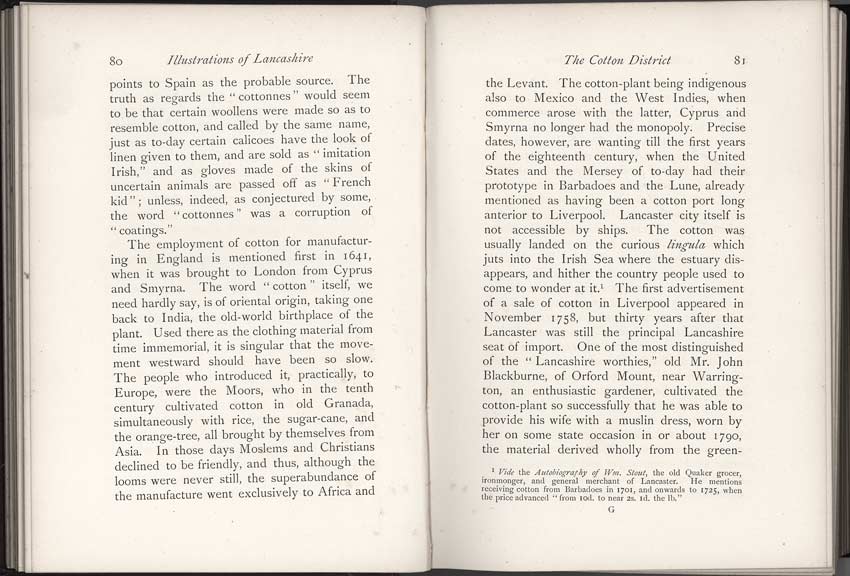
Scan and page transcript from:
LANCASHIRE - Brief Historical and Descriptive Notes
by Leo H. Grindon
Pub. 1892
pages 80-81 |
80 Illustrations of Lancashire points to Spain as the probable source. The truth as regards the " cottonnes" would seem to be that certain woollens were made so as to resemble cotton, and called by the same name, just as to-day certain calicoes have the look of linen given to them, and are sold as "imitation Irish," and as gloves made of the skins of uncertain animals are passed off as "French kid"; unless, indeed, as conjectured by some, the word "cottonnes" was a corruption of "coatings." |
The Cotton District 81 the Levant. The cotton-plant being indigenous also to Mexico and the West Indies, when commerce arose with the latter, Cyprus and Smyrna no longer had the monopoly. Precise dates, however, are wanting till the first years of the eighteenth century, when the United States and the Mersey of to-day had their prototype in Barbadoes and the Lune, already mentioned as having been a cotton port long anterior to Liverpool. Lancaster city itself is not accessible by ships. The cotton was usually landed on the curious lingula which juts into the Irish Sea where the estuary disappears, and hither the country people used to come to wonder at it.1 The first advertisement of a sale of cotton in Liverpool appeared in November 1758, but thirty years after that Lancaster was still the principal Lancashire seat of import. One of the most distinguished of the "Lancashire worthies," old Mr. John Blackburne, of Orford Mount, near Warrington, an enthusiastic gardener, cultivated the cotton-plant so successfully that he was able to provide his wife with a muslin dress, worn by her on some state occasion in or about 1790, the material derived wholly from the green- 1 Vide the Autobiography of Wm. Stout, the old Quaker grocer, ironmonger, and general merchant of Lancaster. He mentions receiving cotton from Barbadoes in 1701, and onwards to 1725, when the price advanced "from 10d. to near 2s. 1d. the lb." |
